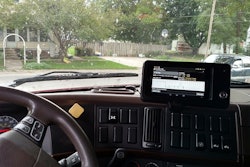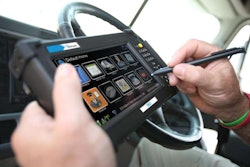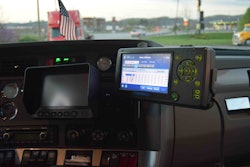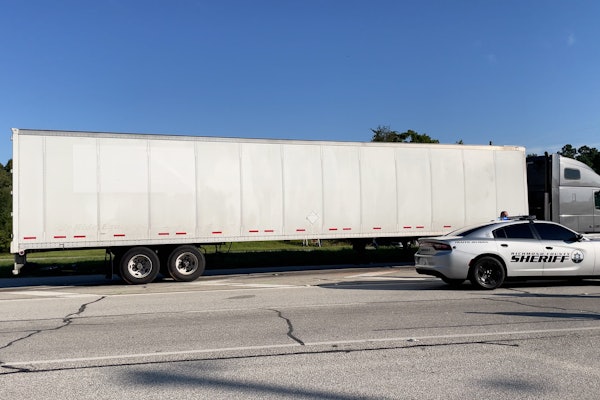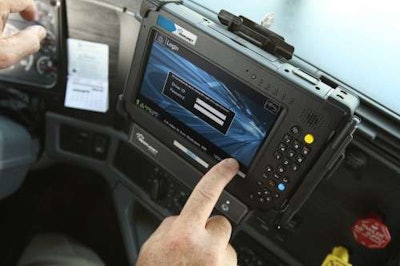
The document is supposed to help ELD manufacturers register and self-certify their products with the technical standards of the ELD rule.
The agency’s ELD rule went into effect December, 2015, and enforcement is set to begin Dec. 18, 2017. After this deadline, all carriers and truck drivers — with some exceptions — will be required to use “certified” ELD devices in the agency’s online registry.
Getting in the registry is a marketing opportunity for ELD suppliers, especially those who are relatively new and unknown in the industry. The registration and self-certification process is raising some eyebrows, however.
Currently, five ELD suppliers and their products are listed in the ELD registry, but neither the FMCSA nor any independent third party has conducted tests to verify they meet the requirements in the 440-page document.
One requirement is that ELDs can transfer a raw data file to an external application called Electronic Record of Duty Status (ERODS). The ERODS application is currently being developed by the FMCSA, and may not be available for testing until late 2017, says Elise Chianelli, director of safety and compliance for PeopleNet.
Per the ELD rule, the file transfer has to be done using wireless or local methods. The transfer will make roadside inspections more efficient and accurate for law officers. Rather than looking at a driver’s ELD display, officers will use ERODS to audit a driver’s hours-of-service data and quickly detect any violations in their current 8-day duty cycle.
Being listed in the ELD registry without verifying the capability to transfer files to ERODS raises “a lot of questions,” Chianelli says.
Tom Cuthberson, vice president of regulatory compliance for Omnitracs, agrees that suppliers should have to comply with this and other ELD requirements before they are listed in the FMCSA’s online registry.
Like many other suppliers, Omnitracs has AOBRD-compliant applications for in-cab and mobile platforms as it works on adding new features to its products to offer a fully compliant ELD version.
Because of the delay from ERODS, “it’s going to take some time” for Omnitracs to register and self-certify ELD products, he says. “There is quite a bit of work to do to make sure we vet out our product properly.”
As reported by Todd Dills, senior editor of CCJ’s sister publication, Overdrive, the FMCSA has started to reach out to several providers listed in the registry to conduct additional vetting.
During an online listening session with ELD manufacturers, a spokesperson for the FMCSA said the certification of ELD products can be challenged. After reviewing a challenge, the agency would remove a product from the ELD registry and give the manufacturer 30 days to respond, Cuthberson says.
The FMCSA also raised the possibility that if manufacturers do not reconcile a challenge within 30 days, the manufacturer would have to be vetted by an independent third party to ensure their product meets the ELD test requirements in the 440-page document before they can be re-listed, he says.
Studies show that about half of motor carriers are currently using electronic logs that meet the AOBRD standard. The ELD rule grants a two-year extension for AOBRD users to convert to the new ELD specifications. In most cases the conversion will only require a software update.
Both Chianelli and Cuthberson agreed that fleets that currently use AOBRDs might decide to delay implementation of a full ELD version until 2019, as some required features could add complexity to their operations.

The driver has the first right to reconcile these events before management steps in.
Presenting unassigned events to a driver at login could be especially difficult for fleets with slip-seat operations, Chianelli says. What if drivers reject driving activities that belong to them?
“If you have supporting documents stating that a driver is in the cab, moving a load, but they are rejecting a driving activity, what does that mean?” she adds. “I see a lot of company policies that need to be put into place to support that piece.”
Cuthberson advises that fleets create login credentials for the primary driver as well as logins for mechanics and other associates that drive short distances but who are exempt from hours-of-service rules. Defining the types of movements in the fleet, and assigning logins for exempt drivers, will help to eliminate the unassigned driving events that are presented to primary drivers at login, he says.



